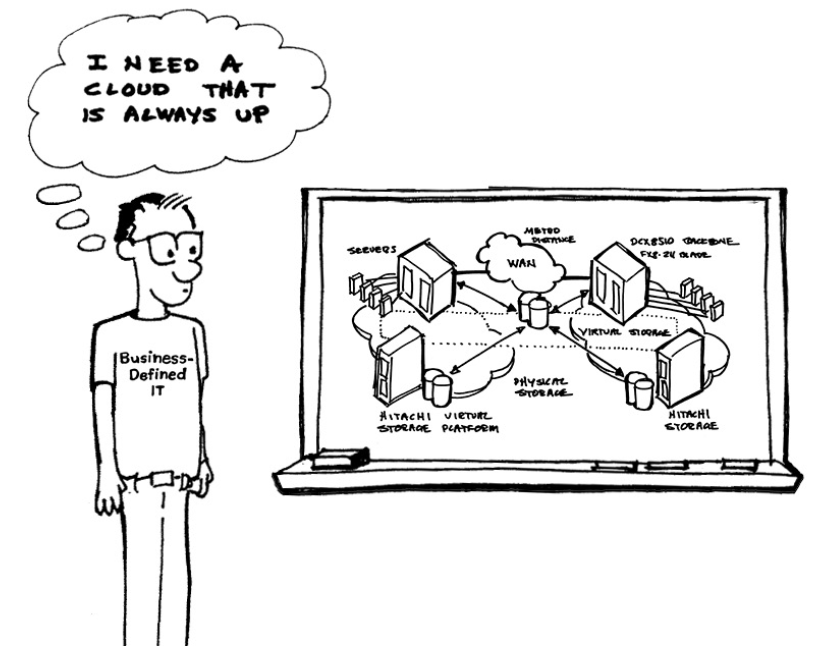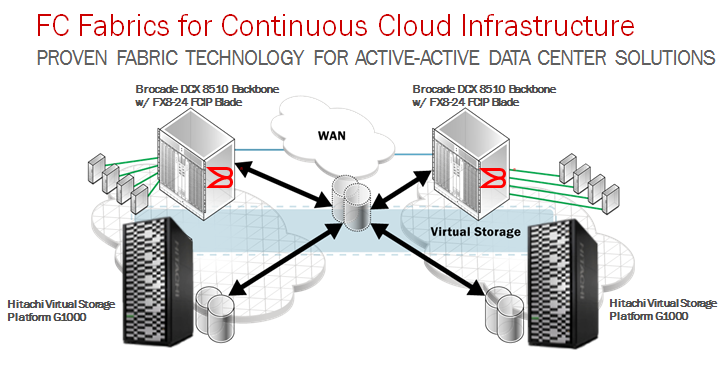
It appears that we have finally moved on from cloud-washing everything IT to the era of software-defined. For believers of Gartner’s hype cycle, clearly we have transitioned from the Trough of Disillusionment towards the Plateau of Productivity because of new storage solutions that actually solve real business problems and provide benefits for enterprises.
Today, public cloud storage solutions tend to get more of the popular press coverage with content that focuses on cloud services providers (CSPs) like Amazon, Google, and Azure who deliver file-based storage, backup, and archiving. In my last blog I wrote about Rackspace and their Gen 5 Fibre Channel hybrid cloud solutions targeting outsourced primary storage. As a follow-up, it is now both important and timely to revisit the topic of private cloud storage.
In 2011 we used the U.S Commerce Department’s NIST standard definition for all things cloud, as inspiration for promoting Fibre Channel as the foundation for private cloud storage. In 2014, cynics are now claiming vendors simply cloud-washed traditional solutions and labeled them as private cloud. While the debate rages on, I believe technology inspired by, but not fully compliant with, the textbook definition, can provide meaningful benefits for enterprises that care more about the bottom line than the ivory tower.
The NIST definition describes the “essential characteristics” of cloud computing, but it doesn’t go into infrastructure details. These are left to the vendor to figure out in their solutions.
Hitachi Data Systems recently launched “Continuous Cloud Infrastructure” to help enterprises adapt to the rapidly changing requirements facing IT organizations. It’s about repositioning IT from a rigid infrastructure into a strategic asset that enables businesses to leverage their information into competitive advantages. Rather than being limited by technology, enterprises will have “business-defined IT”.
HDS seems to get it in moving enterprises further towards Gartner’s Plateau of Productivity. The defining characteristics of Hitachi’s Continuous Cloud Infrastructure are focused on availability, automation, and agility. This requires an active-active infrastructure that eliminates disruptions and downtime; policy-driven management aligned to application SLAs; and scalable infrastructure that can be deployed quickly to support all workloads. Hitachi combines hardware that includes the new VSP G1000 with software capabilities from the Hitachi Storage Virtualization Operating System and management automation through the Hitachi Command Suite to deliver a blueprint for a private cloud that meets most if not all of NIST’s definition of cloud computing.
So where does the network fit into Hitachi’s solution for private cloud? The network is a foundational technology for connecting the key pieces of the infrastructure. Brocade fabric technologies, whether Fibre Channel or Ethernet, are the perfect complement to Hitachi cloud storage solutions. Brocade Gen 5 Fibre Channel and Ethernet Fabric technologies deliver non-stop networking, policy-driven management, and simple scalability and agility for enterprise storage and data networks.

Specific to perfectly complementing the new HDS storage solutions, Brocade Gen 5 Fibre Channel platforms are purpose-built and proven for enterprise storage. Hitachi’s vision for an active-active data center includes local and remote data center storage connected via Brocade DCX 8510 Backbones with integrated FCIP blades. This is a fundamental component for the zero-downtime network infrastructure. Brocade Fabric Vision complements the hardware with a software layer that simplifies management and improves availability and performance through advanced policy-based monitoring, management, and diagnostics. It also accelerates the deployment of new infrastructure by testing and validating new network infrastructure prior to production.
Hitachi’s Continuous Cloud Infrastructure is a bold new vision for enterprise IT infrastructure. The combination of Hitachi and Brocade technology provides an easy way for companies to transition to an infrastructure defined by the needs of the business today and into the future.
Follow Brocade on Twitter @BRCDcomm
Follow me on Twitter @scottshimo
#Gen5FibreChannel#HitachiDataSystems#FabricVision#BrocadeFibreChannelNetworkingCommunity#ssd#IOPS#flashstorage#Reliability#hds#performance#ContinuousCloudInfrastructure#Business-defined#availability#latency#DCX8510